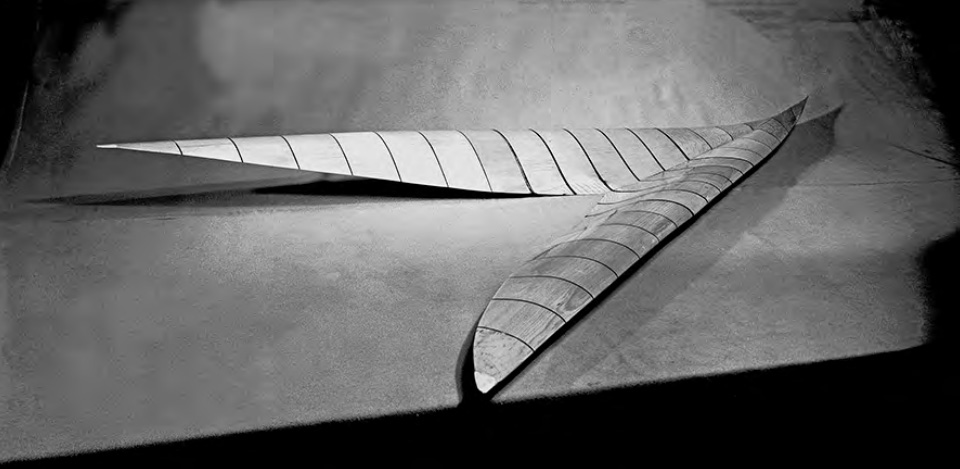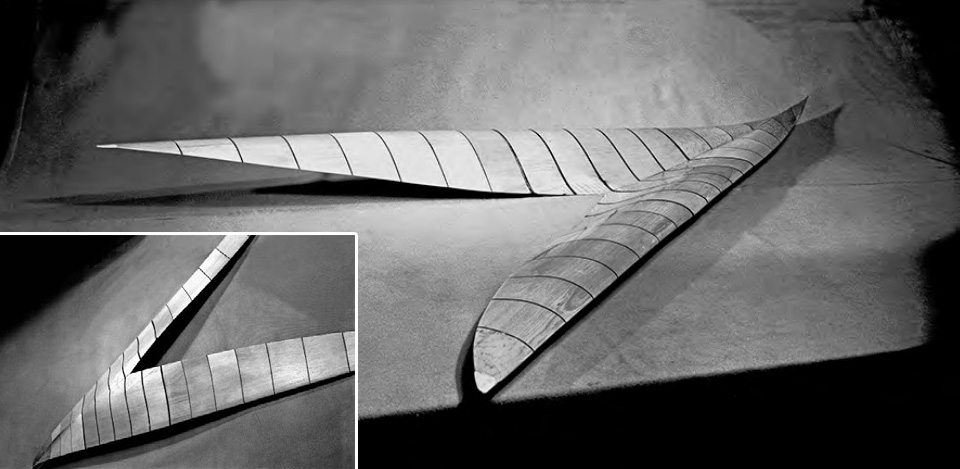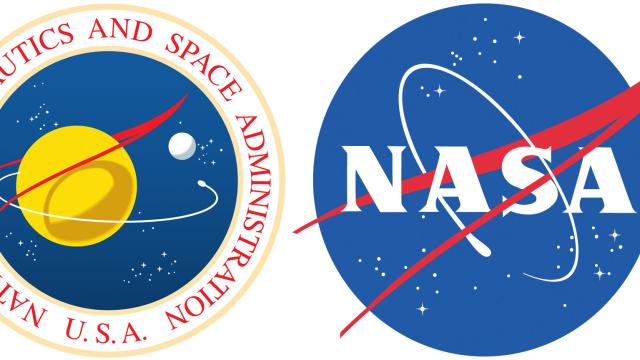You’ve probably seen NASA’s so-called “meatball logo,” and wondered what it meant. Obviously, the blue sphere represents a planet. What about the red? I’d assumed the chevron stood for aeronautics, and once I heard it represented a certain constellation. But the truth is more interesting.
Thanks to NASA’s latest free e-book titled “Emblems of Exploration: Logos of the NACA and NASA,” I just learned that the red shape was inspired by actual aerospace research programs of the late Fifties. It stands for this:

This is a twisted and cambered supersonic wing model, made of wood and designed to be tested in wind tunnels. This is its story:
James J. Modarelli, head of the Research Reports Division at the NASA Lewis Research Center (now the NASA Glenn Research Center), was the chief designer of the NASA seal and meatball insignia. In July 1958, Modarelli attended the triennial inspection of the AAL, during which facilities and research efforts within the NACA were highlighted and discussed for invited guests in the scientific community. […] During the Ames meeting, Modarelli participated in a tour consisting of nine stops for presentations on topical research activities.
At the Ames Unitary Plan Wind Tunnel, he viewed an Ames exhibit featuring a discussion by Ames researchers on current advanced supersonic aircraft technology. On display was an Ames wind-tunnel model of a radical supersonic aeroplane configuration designed for efficient flight at Mach 3. Featuring a cambered and twisted arrow wing with an upturned nose, the sleek model deeply impressed Modarelli as a symbol of the leading-edge aeronautical efforts of the NACA.
[…]During a visit to Langley in late summer, he saw another highly swept and cambered arrow wing model that had been tested in the Langley Unitary Tunnel at supersonic speeds. The efforts at both Ames and Langley had been stimulated by the pioneering efforts of the brilliant NACA/NASA scientist R. T. Jones in his quest for aerodynamic efficiency at supersonic speeds. Jones is recognised as the first American scientist to analyse and advocate for the beneficial effects of wing sweep on high-speed flight. When Jones transferred from Langley to Ames in 1946, he retained his interest in the subject, maintaining communication with peers at Langley while initiating new research at Ames.
The leader of research under Jones at Ames was Elliott D. Katzen, while Clinton E. Brown led the work at Langley. In 1958, after reviewing the advanced wings created by both groups, Modarelli stylised the radical features of the arrow-wing configuration in his evolution of the NASA seal design. The wing would also ultimately become an element of the NASA insignia.

View of the 1958 Triennial Inspection display on supersonic aerodynamics that was viewed by Jim Modarelli in the Ames Unitary Plan Wind Tunnel High Bay. The large display model of a twisted and cambered supersonic wing configuration at the right side of the picture impressed Modarelli.

A three-quarter rear view of a wooden Langley display model showing the radical twist and camber of a supersonic arrow-wing design. Note the cobra-like raised nose at the upper right and the cambered, drooped trailing edges of the 75° swept wing at the left.
